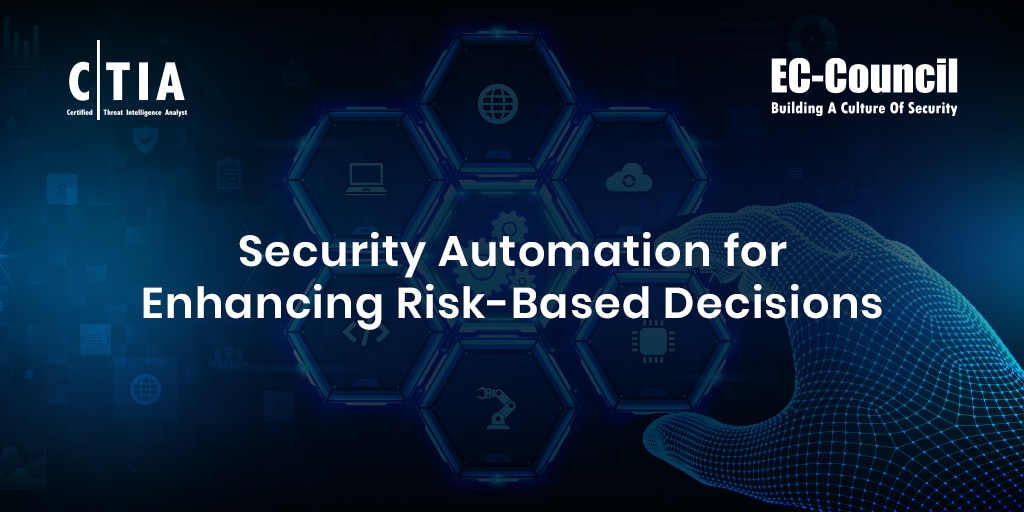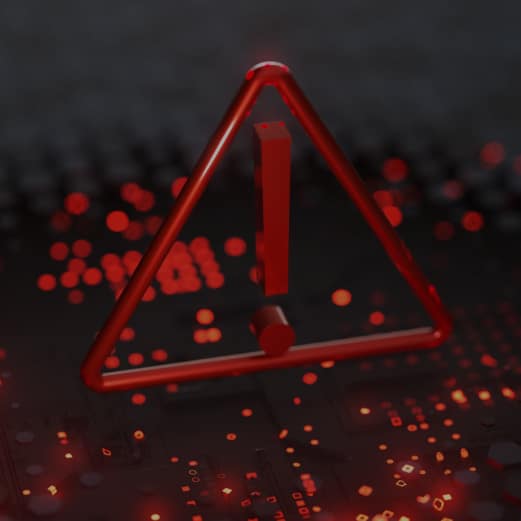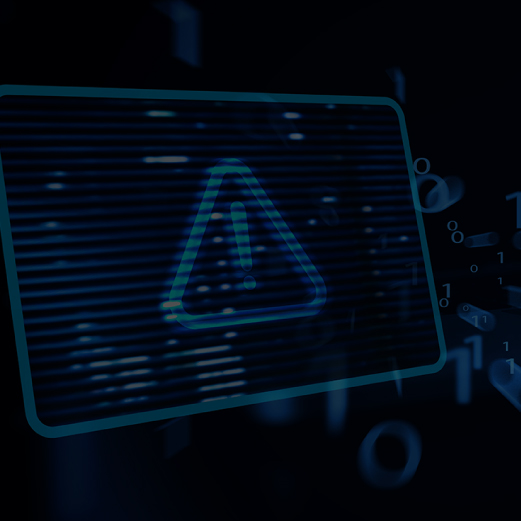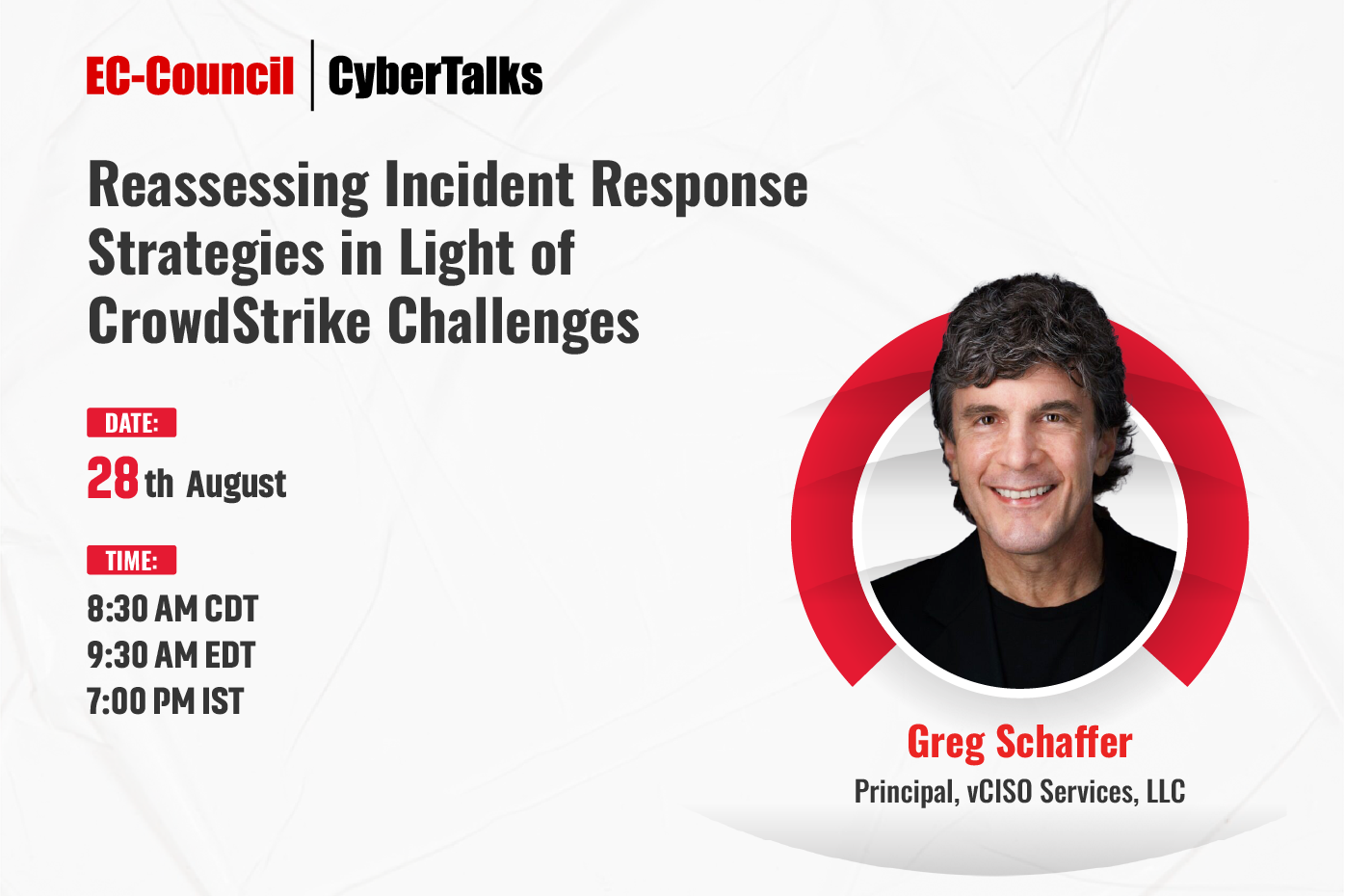Security automation involves the use of technology to carry out routine IT security tasks, like endpoint scans and incident responses, while minimizing human intervention. Given the vast, intricate, and dynamic nature of cyber environments, coupled with the proliferation of vulnerabilities and persistent cyber threats, automation is essential for bolstering cybersecurity.
While automation is already integrated into numerous cybersecurity operations, it confronts ongoing challenges in achieving comprehensive security monitoring capabilities, encompassing real-time threat detection, incident response, and risk-based decision-making. This blog seeks to explore the significance and constraints of security automation and its potential contribution to the process of making risk-based decisions.
Understanding Security Automation
Security automation refers to the automated execution of security tasks, encompassing the detection, investigation, and mitigation of cyber threats independently or with minimal human intervention. Automation offers numerous advantages in an ever-evolving threat landscape marked by constant security risks and attacks. It diminishes human errors, enhances operational efficiency, improves accuracy, reduces overall risk, expedites incident response, and fortifies an organization’s future defenses.
Critical cybersecurity capabilities often center on threat intelligence, where experts must analyze risks and strategies for risk reduction. A risk-based approach to cybersecurity entails the evaluation of cyber threats and prioritizing defensive measures. This proactive and adaptive approach assists in identifying genuine cyber risks to an organization’s most valuable assets, effectively allocating resources and security actions to mitigate those risks to an acceptable level. A security strategy guided by risk-based decisions empowers organizations to set practical, achievable security objectives and utilize resources more efficiently.
Several approaches exist in automation, particularly in network defense design. “Low-Regret” and “High-Regret” approaches are what those are called. As the name implies, it refers to choosing whether to execute automated actions by using a benefit vs. regret assessment. Because of this, companies now prioritize when to automate a task rather than whether it should be done in the first place. The notion of regret in relation to automated responses derived from cyber threat intelligence is as follows (Ekin, 2023):
- “Low-Regret”: Whether or not the intelligence assessment is accurate, it is highly unlikely that automated action taken in response to this intelligence will cause operations to be disrupted.
- “High-Regret”: Operations may be impacted if automated action is taken in response to this intelligence.
Need for Security Automation
In recent years, cyberattacks have surged in frequency, sophistication, and the subsequent cost of mitigation. Notably, many attackers now harness automation to orchestrate multiple concurrent attacks, amplifying their chances of success. Simultaneously, the IT landscape has grown more intricate for numerous organizations, particularly in the past three years when businesses rapidly expanded remote work capabilities in response to the pandemic. This expansive, boundary-less network, coupled with the proliferation of personal devices, has substantially heightened risk and complexity for IT and security teams. 90% of all businesses globally are small and medium-sized enterprises (SMEs), numbering close to 400 million. The most recent study, in which senior executives leading SMEs from several nations took part, found that these businesses are vulnerable to malware attacks, phishing attacks, insider threats, webattacks, ransomware, denial-of-service (DoS) attacks, man-in-the-middle (MITM) attacks, and similar kinds of other threats. Because all employees use laptops, desktop computers, or servers, and most operations are manually performed by human beings, operations performed in networks or even at endpoints are more susceptible to cyberattacks for any mistake or negligence towards defined processes. It is also time-consuming due to manual efforts (Pawar, 2022; Pawar & Palivela, 2023; Pawar, 2023).
Organizations must significantly enhance their incident detection, response, and remediation capabilities to mitigate the risk of cyberattacks and minimize potential damage in the event of a breach. This imperative necessitates the adoption of security automation.
Role of Automation in Enhancing Risk-Based Decisions
Security automation plays a pivotal role in enhancing risk-based decisions within cybersecurity. When integrated into security processes, automation brings several significant advantages, such as streamlining the collection and analysis of vast amounts of data. This enables security operations to identify potential risks more swiftly and accurately. Automated tools can continuously monitor networks, identify anomalies, and respond to threats in real-time, reducing the window of vulnerability.
Furthermore, automation enables the implementation of risk-based decisions through intelligent algorithms and machine learning. It can assess the severity of security incidents and their potential impact on the organization and recommend appropriate responses based on predefined risk thresholds. Automation can also facilitate consistency in decision-making by eliminating human error and bias, ensuring that risk-based decisions are consistently applied across the organization. However, this process also requires large groups of working samples for the machine learning model to analyze and develop.
Challenges Associated with Security Automation
While security automation offers substantial benefits, it comes with its challenges. In addition to the privacy and compliance issues linked to data-dependent learning models, several key technical challenges include:
- Complexity: Heterogeneous systems, geographically dispersed networks, bandwidth constraints, varying data formats used by collection tools, and a need for standardized architecture all add to the difficulties of ongoing automated data collection.
- False positive: Network and vulnerability scanners do not consistently yield precise information and may not offer a comprehensive identification of all vulnerabilities. The aggregation of data from various vulnerability scanners and compliance validation checks into a unified database should be carried out meticulously to eliminate duplicate alerts.
- Resource: Security automation demands substantial processing power and may necessitate storage capacity beyond a system’s capabilities. In geographically distributed networks, security tools might generate excessive network traffic, potentially disrupting system operations.
- Interoperability: Security automation might encounter integration issues, with variations in output and the methods used to link risk scores to vulnerabilities. Adding to thecomplexity of security automation is the dynamic nature of network environments, the ever-shifting landscape of threats and vulnerabilities, and the continuous flux of endpoints, configurations, and connections.
Implementing Security Automation
While various security tools may operate differently, a typical process for an automated security system includes:
- Receiving alerts from security tools, correlating them with additional data or threat intelligence, and determining whether the alert represents a genuine security incident.
- Identifying the type of security incident and selecting the most suitable response from a security playbook.
- Implementing containment measures using security tools to prevent the threat from spreading or causing further damage.
- Eradicating the identified threat from affected systems may involve isolating infected systems from the network and performing system wipes or reimaging.
- Escalation by utilizing predefined rules to assess whether automated actions effectively mitigated the threat. Conversely, if further action is unnecessary, the system can close the ticket and generate a comprehensive threat report.
Automation can take various forms, including process automation, Security Orchestration, Automation and Response (SOAR), or Extended Detection and Response (XDR). These approaches share core processes while differing in their overall capabilities and scope of application.
RPA
Robotic Process Automation (RPA) technology excels at automating routine, rule-based tasks that don’t necessitate advanced analysis. RPA services employ software “robots” that emulate human actions, using mouse and keyboard commands to automate operations within a virtualized computer system. These robots are capable of executing security-related activities, including vulnerability scans, the operation of monitoring tools, saving results, and undertaking fundamental threat mitigation tasks, such as configuring firewall rules.
SOAR
Security Orchestration, Automation, and Response (SOAR) systems are consistently integrated into Security Operations Center (SOC)
capabilities to empower organizations to gather data related to security threats and automate responses to security incidents. They play a pivotal role in establishing, prioritizing, standardizing, and automating incident response procedures. SOAR platforms excel in orchestrating actions across various security tools, facilitating automated security workflows, policy enforcement, and report generation. These systems are frequently employed for the automated management and resolution of vulnerabilities.
XDR
eXtended Detection and Response (XDR) solutions represent the next stage in the evolution of endpoint and network detection and response systems. These solutions aggregate data from various parts of the security environment, encompassing endpoints, networks, and cloud systems. This comprehensive
approach enables the detection of elusive attacks that may otherwise go unnoticed, hidden within security layers and silos. XDR excels at autonomously collating telemetry data into a coherent attack narrative, providing analysts with a complete toolkit for investigating and responding to incidents.
Furthermore, it seamlessly integrates with security tools to carry out automated responses, making it a holistic automation platform for incident management. XDR’s automation features include machine learning-based detection, correlation of linked alerts and data, a centralized user interface, response orchestration, and dynamic learning capabilities that continuously improve over time.
Conclusion
In today’s fast-paced digital landscape, organizations face an ever-evolving array of threats, making it essential to adopt proactive and data-driven approaches to risk management. In summary, security automation empowers organizations to make more informed risk-based decisions by providing real-time threat intelligence, enhancing consistency, and allowing for more efficient and effective responses to security incidents. It is an indispensable component of modern cybersecurity strategies, enabling organizations to proactively manage and mitigate risks in an increasingly complex threat landscape.
Reference
AlSadhan, T., & Park, J. S. (2016, August). Enhancing risk-based decisions by leveraging cyber security automation. In 2016 European Intelligence and Security Informatics Conference (EISIC) (pp. 164-167). IEEE. https://ieeexplore.ieee.org/document/7870215
Crowdstrike. (2023, March 01). What is security automation? Types, benefits & 5 best practices. https://www.crowdstrike.com/cybersecurity-101/security-automation/
Cynet. (2022, December 08). Security Automation: Tools, Process and Best Practices. https://www.cynet.com/incident-response/security-automation-tools-process-and-best-practices/
Check Point. (2022, May 11). What is Security Automation? https://www.checkpoint.com/cyber-hub/cyber-security/security-automation/
Ekin, T., Naveiro, R., Insua, D. R., & Torres-Barrán, A. (2023). Augmented probability simulation methods for sequential games. European Journal of Operational Research, 306(1), 418-430. https://digital.csic.es/bitstream/10261/347762/1/APSSG_EJOR.pdf
Pawar, S., & Palivela, H. (2022). LCCI: A framework for least cybersecurity controls to be implemented for small and medium enterprises (SMEs). International Journal of Information Management Data Insights, 2(1), 100080. https://doi.org/10.1016/j.jjimei.2022.100080
Pawar, S., & Pawar, P. (July 23, 2023). BDSLCCI – Business Domain Specific Least Cybersecurity Controls Implementation. Notionpress. https://notionpress.com/read/bdslcci
Pawar, S. A., & Palivela, H. (2023). Importance of least cybersecurity controls for Small and Medium Enterprises (SMEs) for better global Digitalised economy. In Smart Analytics, Artificial Intelligence and Sustainable Performance Management in a Global Digitalised Economy (pp. 21-53). Emerald Publishing Limited. https://ideas.repec.org/h/eme/csefzz/s1569-37592023000110b002.html
SOCRadar. (2022, March 12). What is the Risk-Based Approach to Cybersecurity? https://socradar.io/what-is-the-risk-based-approach-to-cybersecurity
Tags
About the Author

Dr. Shekhar Pawar
CEO, SecureClaw Inc. and GrassDew IT Solutions
Dr. Shekhar Pawar is Ph.D. in the cybersecurity domain from SSBM Geneva, Switzerland. He has completed his executive management degree from SJMSOM, IIT Bombay, and engineering in electronics and telecommunications from Mumbai University. Some of his skills and certifications include Certified Information Systems Auditor (CISA), Certified Ethical Hacker (CEH), Computer Hacking Forensic Investigator (CHFI), ISO 27001 Lead Auditor, PCI DSS Implementer, Diploma in Cyber Laws, Microsoft Certified Professional (MCP), Certified Blockchain Developer, Certified ATM for CMMi Assessment, DSP & Applications – IIT Madras, and Diploma in Industrial Electronics. He is the author of the research book published by Emerald Publishing, UK, with the title “Smart Analytics, Artificial Intelligence, and Sustainable Performance Management in a Global Digitalised Economy” and a chapter with the title “”Importance of Least Cybersecurity Controls for Small and Medium Enterprises (SMEs) for Better Global Digitalised Economy”. He is the inventor of the BDSLCCI cybersecurity framework and the author of the book “BDSLCCI: Business Domain Specific Least Cybersecurity Controls Implementation”. He is also the author of the nonfiction book “Air Team Theory: Understanding 10 Types of Team Mates and Best Practices to Succeed.” Currently, he is working as the founder and CEO of SecureClaw Inc., USA, and GrassDew IT Solutions Pvt. Ltd., Mumbai










